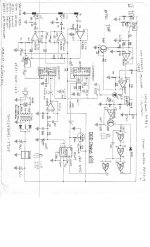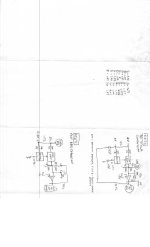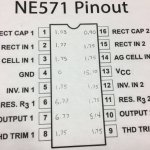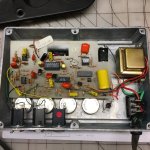andrewsrea
Active member
My DoD Chorus 690 wasn't working. The LFO, Flip-flop SAD512D bucket-brigade chip and the compression half of the NE571 compandor was operating, but the expansion wasn't and the Vcc was about +14.2VDC (below the threshold of the LM78L15 regulator). I assumed the electrolytics were all bad and replaced them all, ensuring exact polarity (and quadruple checking).
The Vcc came back to a perfect +15.04VDC and then I could not get output from the NE571 from either the compression 'send' or the expansion 'return'. I bought a NOS NE571 from Small Bear and had the same problem. I've checked all associated circuit values and continuity, multiple times. No luck. 30 hours later and I am out of ideas.
FWIW: the compression and expansion circuits employed are straight out of the NE571 Compandor data sheet.
Attached is the DoD schematic, a diagram of the NE571 schematic and its pin voltages. All look textbook, except the compressor output is very high at 14.41v (pin 10) and the expander output (pin 7) appears high at 7.94v. I noticed the design doesn't have a 1M resistor off the output to keep the caps from DC loading, but keep telling myself the original design worked.
Any ideas or solutions would be appreciated.


The Vcc came back to a perfect +15.04VDC and then I could not get output from the NE571 from either the compression 'send' or the expansion 'return'. I bought a NOS NE571 from Small Bear and had the same problem. I've checked all associated circuit values and continuity, multiple times. No luck. 30 hours later and I am out of ideas.
FWIW: the compression and expansion circuits employed are straight out of the NE571 Compandor data sheet.
Attached is the DoD schematic, a diagram of the NE571 schematic and its pin voltages. All look textbook, except the compressor output is very high at 14.41v (pin 10) and the expander output (pin 7) appears high at 7.94v. I noticed the design doesn't have a 1M resistor off the output to keep the caps from DC loading, but keep telling myself the original design worked.
Any ideas or solutions would be appreciated.






